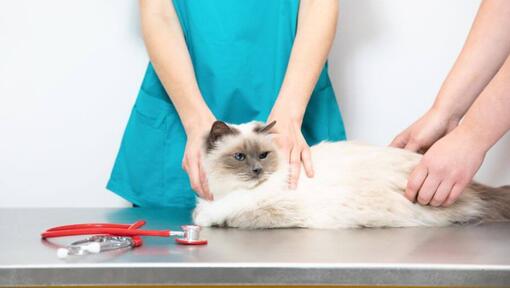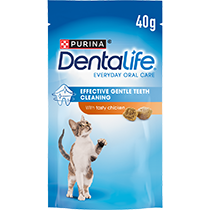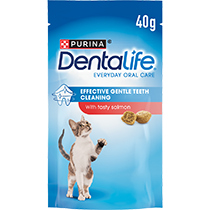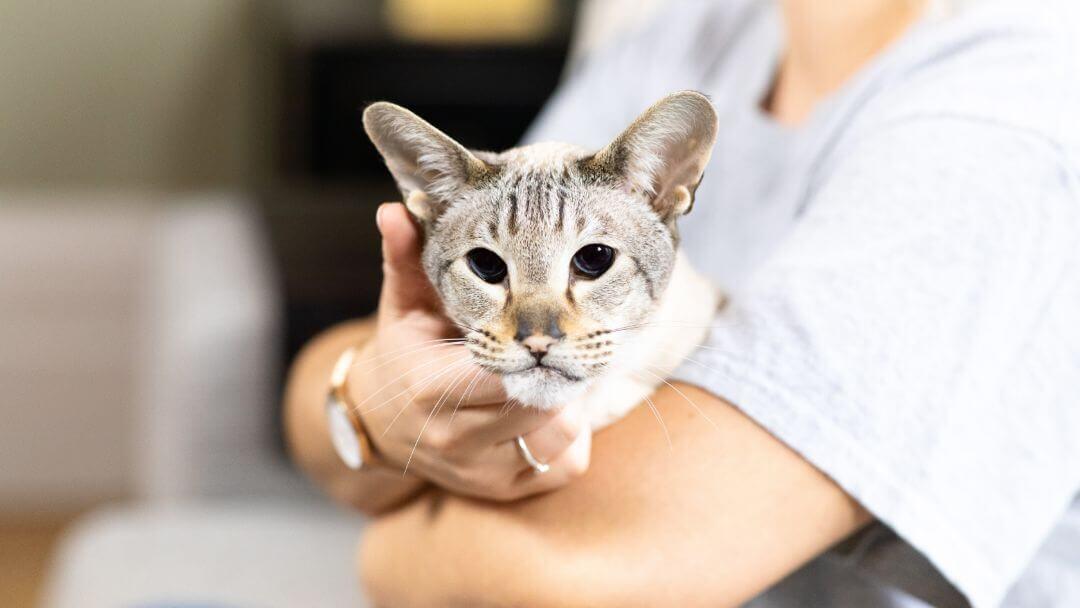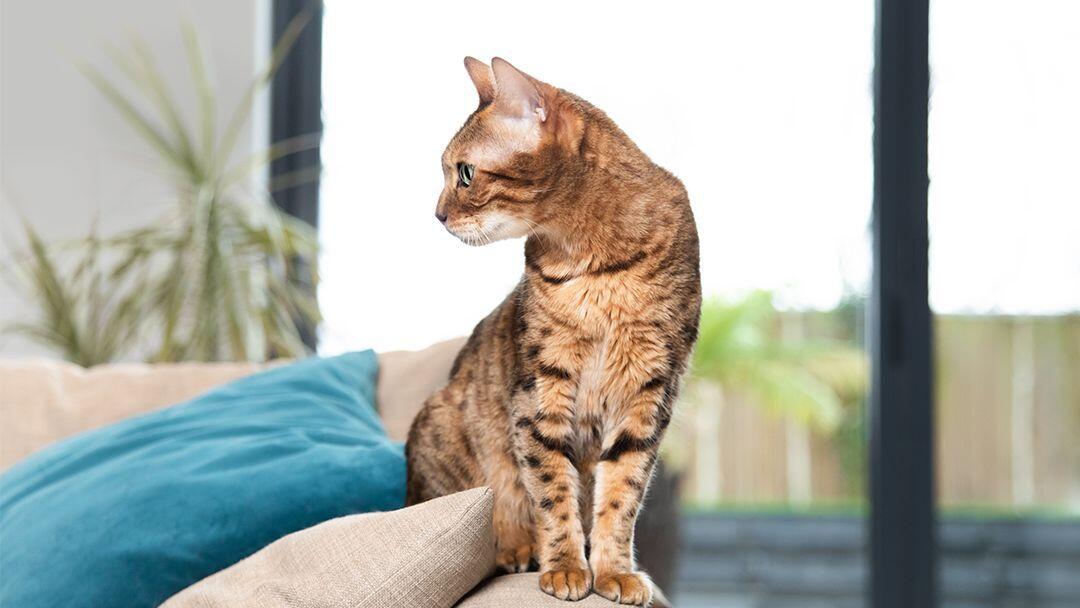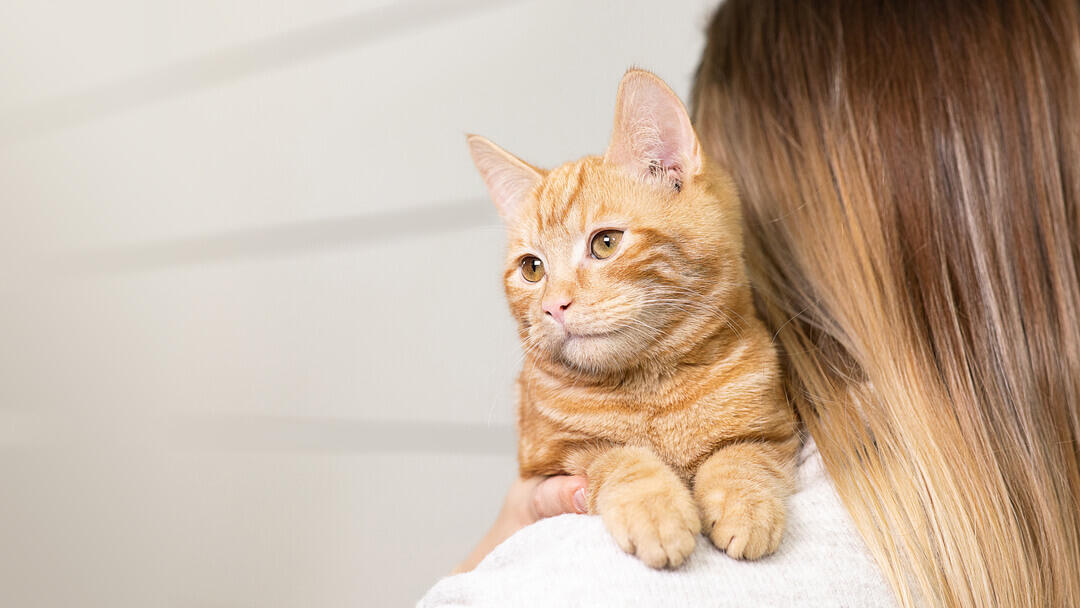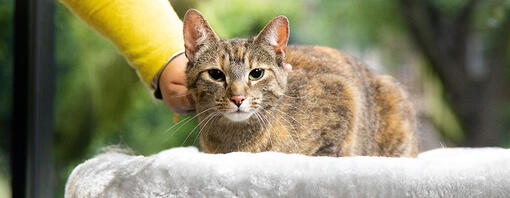
No pet owner wants a time to come when they have to think about cat amputation, but if your cat’s had an accident or is unwell and surgery can stop their pain, it can be the kindest thing to do.
Amputation sounds drastic but it’s a much more common procedure than it once was and, although it involves major surgery, disabled cats can cope very well without a tail or on three legs, once they’ve had time to readapt. So there’s no reason why your handicapped cat shouldn’t live a life that’s filled with as much love and happiness as any of their other feline friends.
Cat tail amputation
As cats' tails are long and energetic, they’re prone to accidents, and injuries. Your vet may be able to treat some of the less serious problems but in some cases they may decide that a severely damaged tail needs to be amputated.
Cat tail amputation is a relatively straightforward operation, and although your furry friend may take some time getting used to living without a tail, you can feel reassured that the operation is unlikely to have a long-term impact on their behaviour.
Limb amputation in cats
Your vet will recommend limb amputation if, for example, your cat’s leg has been very badly injured in an accident or if they’ve discovered a cancerous tumour on a limb, and removing it completely can stop the illness from spreading.
Losing a leg might sound like a drastic measure but many cats continue to live a very happy life on three limbs without any problems. After the operation, your cat will need to recover from the surgery and then learn how to walk and run again, as their weight distribution will have changed.
Your vet will be able to give you lots of help and advice on how you can both cope during these first few weeks.
Cat leg amputation definitely doesn’t mean the end of fun or enjoyment for your cat – they’ve been saved from any suffering and they can now carry on and enjoy the eight lives they’ve still got left!
Ear amputation in cats
When might my cat need an ear amputated?
Ear amputation sounds more drastic than it is, and most cats recover well with no loss of hearing. The only thing you’ll need to do is to keep an eye on the scar following your cat’s surgery to check there are no infections. Other than that, your cat can go about their business as before.
The first few days back home
- You may be asked to change your cat’s dressing. If so, do this daily and make sure the wound is clean and healthy. You should only see improvements so if you have any worries that they have got worse, not better, or you notice a smell or discharge, go back to your vet and ask for their opinion.
- A good quality diet will play an important role in aiding a speedy recovery, so make sure they can access their food and water bowls easily – especially if they have a buster collar/cone that might make it tougher to eat out of their usual bowl.
- If your cat has trouble getting into their litter tray, try cutting one side out so it’s easier for them to access and use an uncovered tray.
- Your cat may find it more difficult to reach their favourite napping spots, so help them by providing ramps or steps up to higher areas and always make sure that they can get to their food, water and bed without needing to jump.
- If your cat has lost a front leg they might find it harder to groom around their head and neck so give them a hand by using damp cotton wool balls or a clean cloth to clean hard to reach areas.
- At first, your cat may struggle to escape danger as fast as they used to, so try and keep them away from potential scraps with other animals.
Helping your cat recover from surgery
Immediately after the operation
- Your cat should be comfortable after surgery and will have been given pain relief during their stay at the vets. When they’re discharged you will be given further pain relief and anti-inflammatories for your cat.
- Your vet may put a buster collar/cone on your cat to make sure that they don’t bite, lick or chew any stitches.
- Before you take your pet back home, make sure you’re 100% clear about what you need to do in terms of after-care. Ask for the instructions to be put in writing so you can double-check them later and don’t hesitate to ask as many questions as you need about your cat’s surgery.
- Your vet will probably advise you to keep your cat indoors immediately after the operation, and may even recommend restricting them to one room at first to limit their exercise and jumping.
- If your cat seems distressed by their recent experience, it can be a good idea to use a pheromone plug in or spray to help calm and settle them. They’re bound to be a little disoriented but give them time and they’ll soon get back to their lively selves.
- If you have other pets in the family, they might worry about any physical or emotional changes that they notice in their companion, so reintroduce the patient slowly and keep an eye on how they interact with one another.
Over the next few weeks
- Keep a close eye on your cat's weight, especially if they’ve had a limb amputation and are exercising less than usual. Weight gain will place more strain on their remaining legs and make it much harder for them to recover and regain their balance.
- Give your disabled cat plenty of time and understanding as they adjust and rehabilitate. It won’t be long before their remaining limbs are stronger and your cat is learning to adapt to their new life.
- Occasionally pets do suffer phantom pains in removed limbs so if you suspect your cat is in discomfort, chat to your vet as they may need some further treatment.



